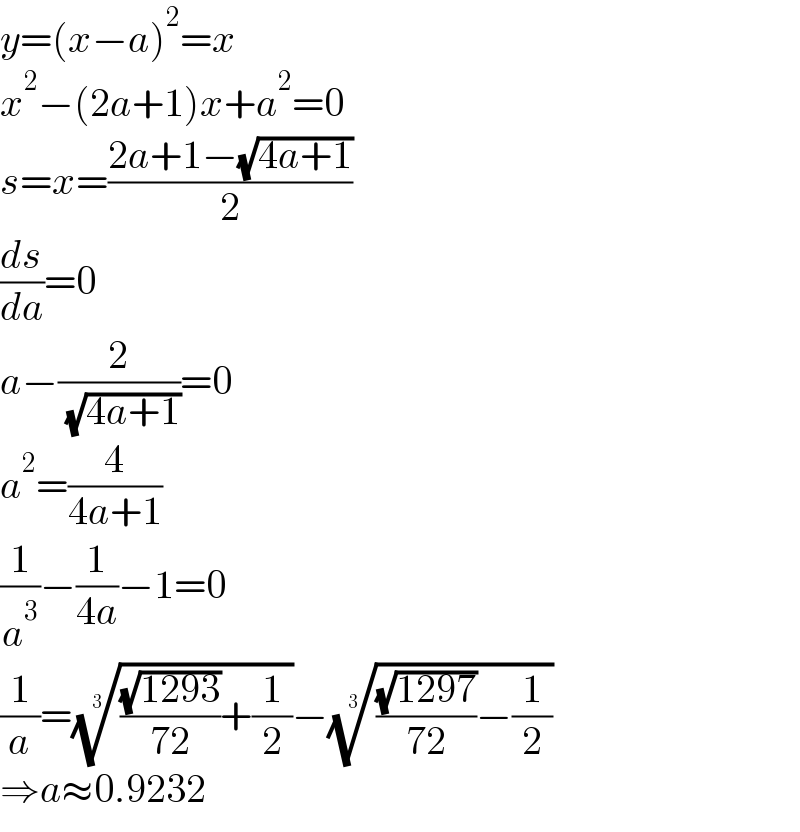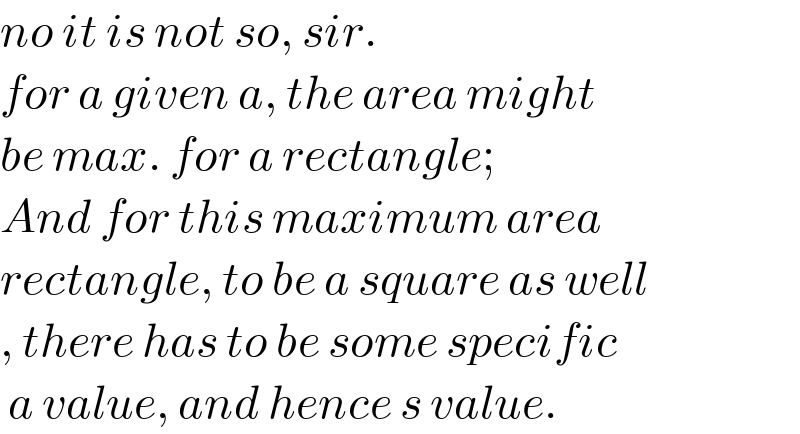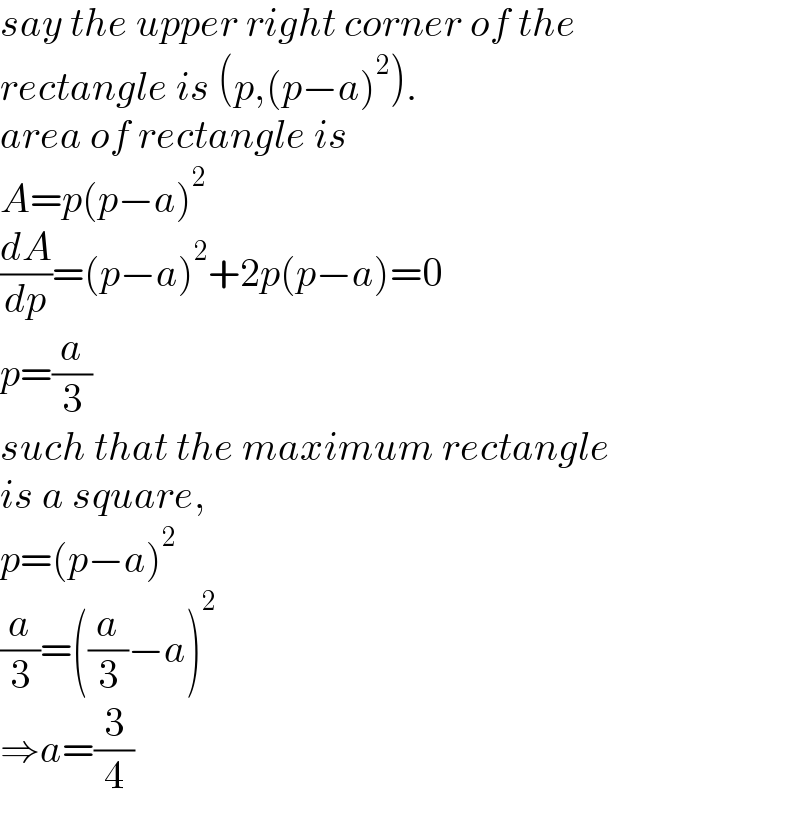
Question and Answers Forum
Question Number 150056 by ajfour last updated on 09/Aug/21

Commented by ajfour last updated on 09/Aug/21

Answered by mr W last updated on 09/Aug/21

Commented by ajfour last updated on 09/Aug/21

Commented by ajfour last updated on 09/Aug/21

Commented by mr W last updated on 09/Aug/21

Commented by mr W last updated on 09/Aug/21

Commented by mr W last updated on 09/Aug/21

Answered by mr W last updated on 09/Aug/21

Commented by ajfour last updated on 09/Aug/21

